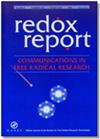在恶唑酮诱导的溃疡性结肠炎中调节肠道生态失调和线粒体功能障碍:β-葡聚糖和/或celastrol的恢复作用
IF 5.2
2区 生物学
Q1 BIOCHEMISTRY & MOLECULAR BIOLOGY
引用次数: 3
摘要
微生物组-线粒体相互作用正在获得显著的关注;因此,研究其机制成为提供疾病管理恢复性系的必要条件。目的是研究β-葡聚糖和/或Celastrol在恶唑酮诱导的溃疡性结肠炎(UC)中的作用机制。方法75只Wistar大鼠随机分为5组。第一组:对照组。II组:UC组,III组:β-葡聚糖处理UC组,IV组:celastrol处理UC组,V组:互治组。各组均检测游离脂肪酸受体2 (FFAR-2)和过氧化物酶体增殖物激活受体γ共激活物1α (PGC-1α) mRNA基因表达。检测枸橼酸合成酶(CS)活性、线粒体膜电位(MMP)、ATP浓度、活性氧(ROS)。测定三甲胺n -氧化物(TMAO)浓度。结果治疗后,我们观察到FFAR-2和PGC-1α mRNA表达明显上调。ATP水平和CS活性均显著升高。相反,随着MMP水平的提高,ROS和TMAO水平显著降低。结论β-葡聚糖和雷公藤红素联合使用对UC的治疗效果优于单独使用,这是一个新的发现,突出了这种联合治疗在调节微生物组/线粒体轴方面的改善作用,从而为UC的治疗开辟了新的途径。本文章由计算机程序翻译,如有差异,请以英文原文为准。
Modulating gut dysbiosis and mitochondrial dysfunction in oxazolone-induced ulcerative colitis: the restorative effects of β-glucan and/or celastrol
ABSTRACT Objectives Microbiome–Mitochondria interaction is gaining a significant attention; thus, studying its mechanism emerges as a must to provide restorative lines in managing diseases. The aim is to study the mechanistic effects of β-Glucan and/or Celastrol in oxazolone-induced ulcerative colitis (UC). Methods 75 Wistar rats were allocated into 5 equal groups. Group I: control group. Group II: UC group, Group III: β-Glucan-treated UC group, Group IV: Celastrol-treated UC group & Group V: mutual treatment group. All groups were subjected to the detection of free fatty acid receptor 2 (FFAR-2) and peroxisome proliferator-activated receptor gamma co-activator1α (PGC-1α) mRNA gene expressions. Citrate synthase (CS) activity, mitochondrial membrane potential (MMP), ATP concentration, reactive oxygen species (ROS) were detected. Trimethylamine N-oxide (TMAO) concentration was measured. Results After treatment we monitored significant upregulation of FFAR-2 and PGC-1α mRNA expression. Likewise, ATP level and CS activity were significantly increased. On the contrary, there was a significant lessening in ROS and TMAO levels with improvement of MMP. Conclusion Mutual use of β- Glucan and Celastrol had a greater effect than each alone against UC, which is considered a novel finding highlighting the ameliorative effects of this combined treatment in modulating Microbiome/Mitochondria axis, thus launching promising avenues for UC.
求助全文
通过发布文献求助,成功后即可免费获取论文全文。
去求助
来源期刊

Redox Report
生物-生化与分子生物学
CiteScore
6.10
自引率
0.00%
发文量
28
审稿时长
>12 weeks
期刊介绍:
Redox Report is a multidisciplinary peer-reviewed open access journal focusing on the role of free radicals, oxidative stress, activated oxygen, perioxidative and redox processes, primarily in the human environment and human pathology. Relevant papers on the animal and plant environment, biology and pathology will also be included.
While emphasis is placed upon methodological and intellectual advances underpinned by new data, the journal offers scope for review, hypotheses, critiques and other forms of discussion.
 求助内容:
求助内容: 应助结果提醒方式:
应助结果提醒方式:


